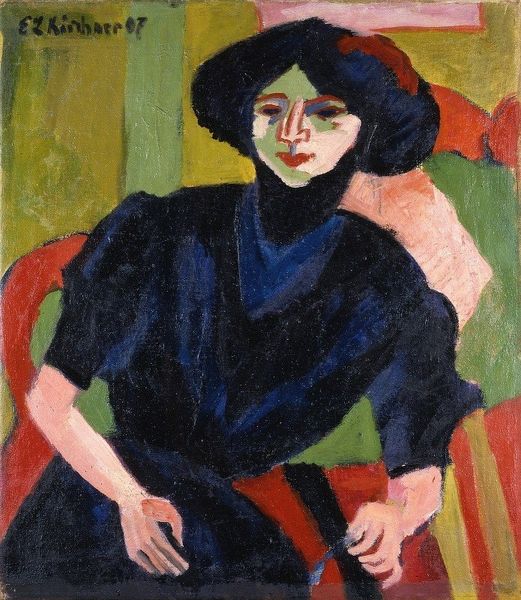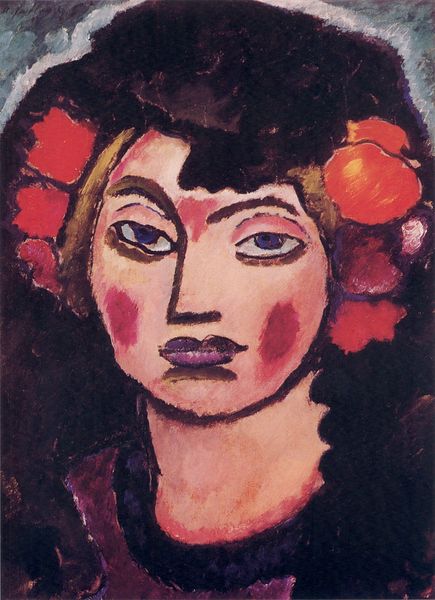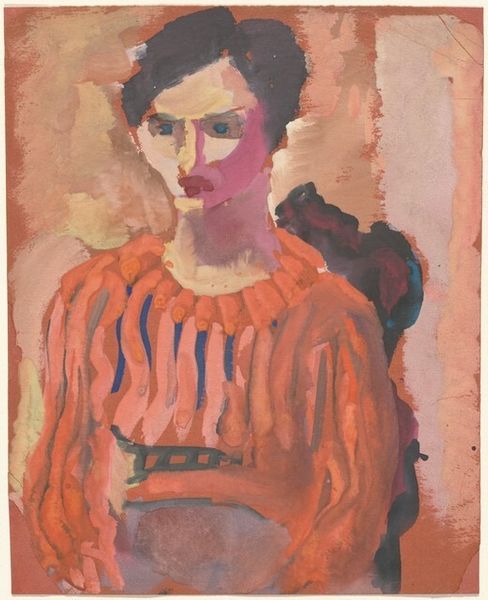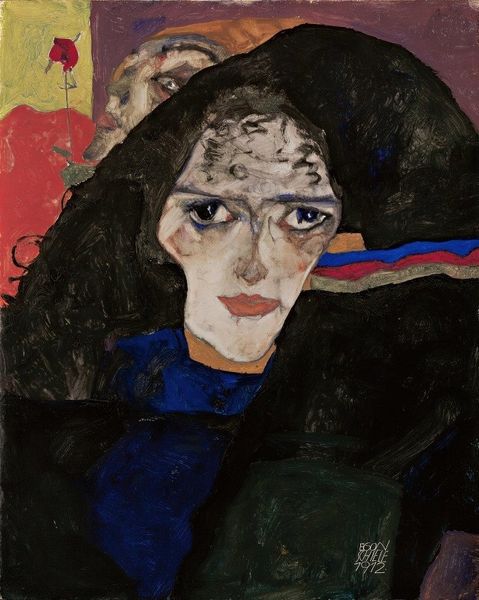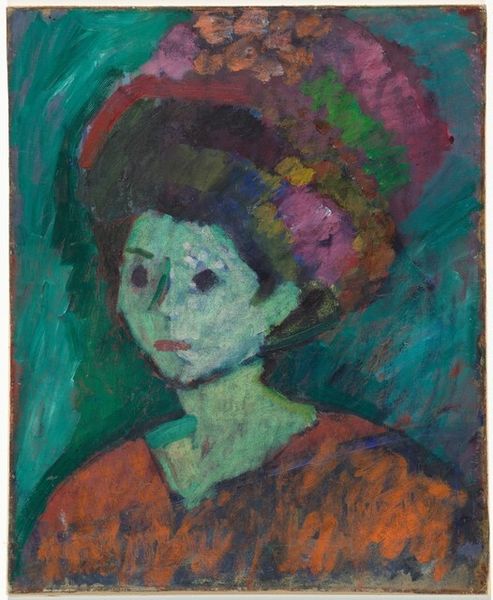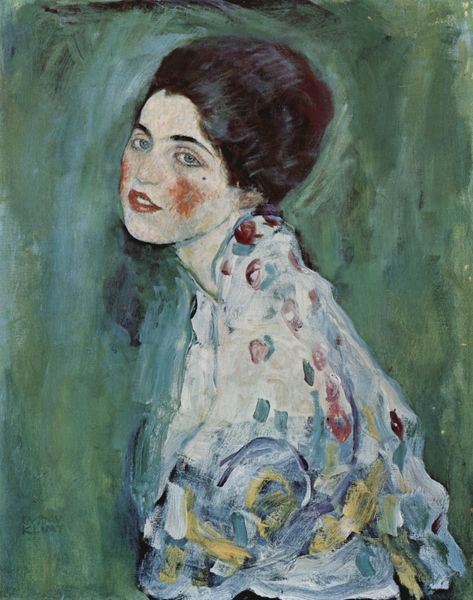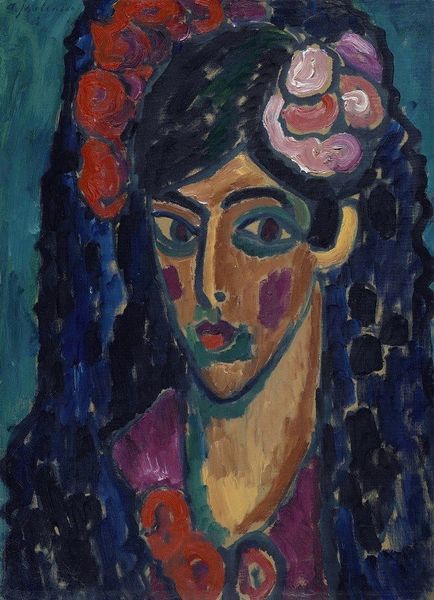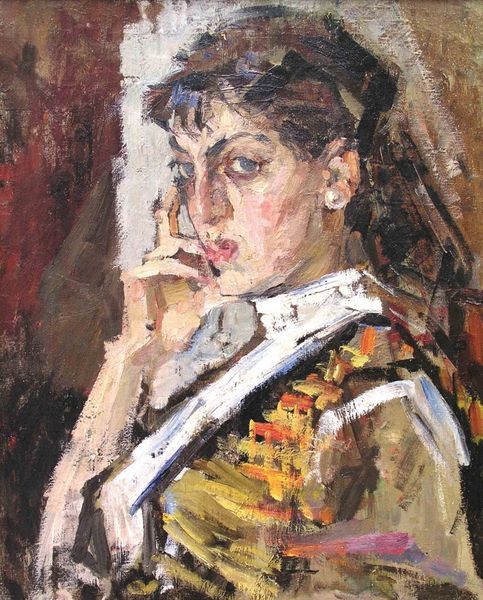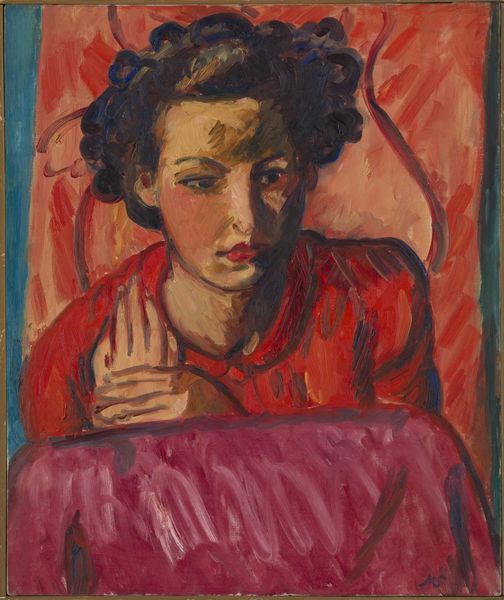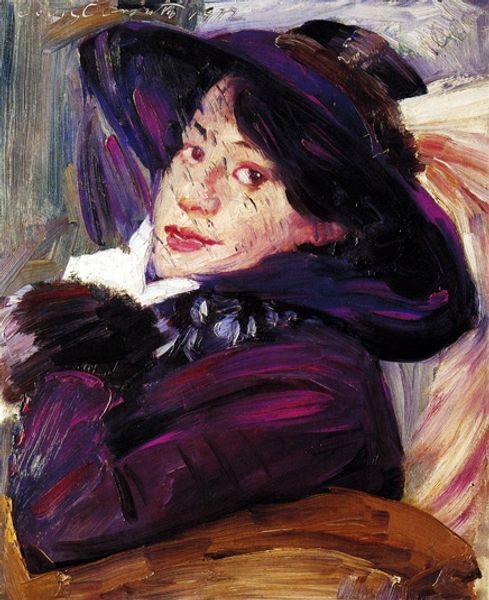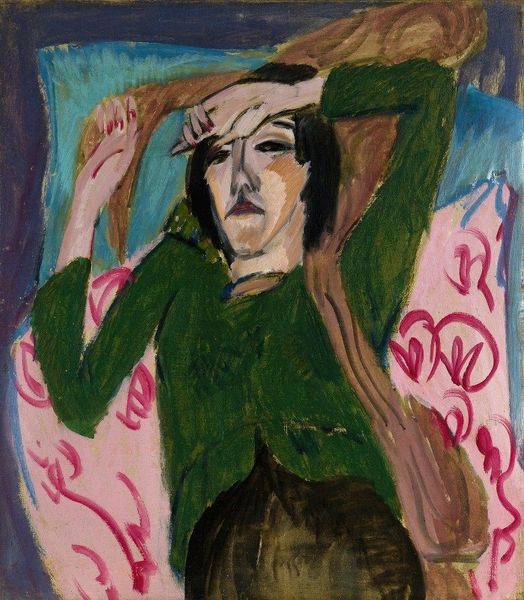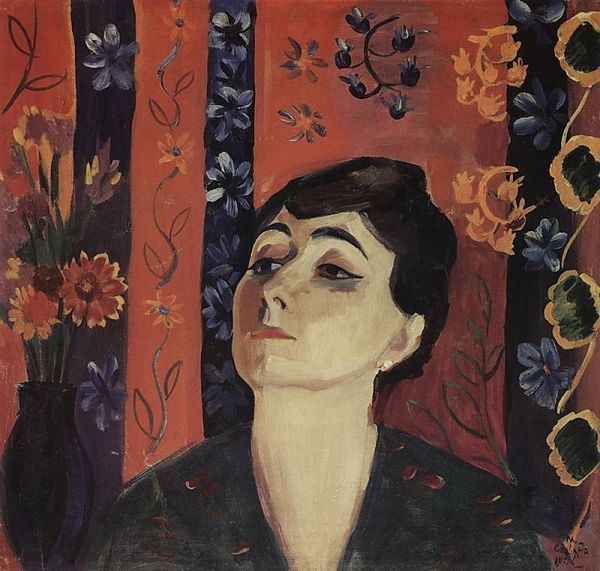
painting, oil-paint
#
portrait
#
figurative
#
painting
#
oil-paint
#
german-expressionism
#
figuration
#
expressionism
#
modernism
Copyright: Public Domain: Artvee
Curator: Welcome. Before us hangs Henry Lyman Saffen’s "Portrait of a Girl," which was created sometime between 1909 and 1914, using oil paint. Editor: It strikes me as immediately melancholic. The intense red backdrop presses forward, almost suffocating the figure. Her gaze is averted, and there's a stiffness in her pose, a reluctance perhaps. Curator: I see it as representative of a time when the means and modes of portraiture were undergoing a profound transformation. Look closely at the brushstrokes: See how they work less towards precise mimetic representation and more to emphasize the materiality of the medium itself? Editor: But those very brushstrokes, that deliberate roughness, add to the emotional impact. The stark, almost crude application of color around her face and neck amplify the sense of unease. Her darkened face may be less realistic than symbolic. The dark areas could represent hidden emotions, shadows, secrets... Curator: Precisely, you can tell there’s some exploration into materiality and production; oil paint provides luminosity. But let’s also observe that it has been manipulated and used. How does it reflect that cultural context, in that particular moment in time? Editor: The floral detail on the hat, even if seemingly ornamental, could signal fragility or fleeting beauty, adding layers of meaning to her overall presentation. Those are recurring motifs from the time. It is a coded world there that has significance way beyond its immediate representation. Curator: And the dress is rendered without excessive detailing; an indication of a growing awareness of both labor and the availability of new materials. Editor: The composition seems very compressed, as if hemmed in. The redness, it speaks to vitality but also a looming dread. The lack of ease and the symbolism… all contribute to an ambiguous feeling of restrained tension. Curator: It is important to analyze it both as an object that was skillfully made with certain materials, within specific technological constraints, and also in the conditions and assumptions surrounding its circulation, consumption, and display. Editor: And how those aspects feed into an interpretation rich in the language of dreams, fears and suppressed feelings…It’s a fascinating insight. Curator: It gives one pause, doesn't it?
Comments
No comments
Be the first to comment and join the conversation on the ultimate creative platform.
